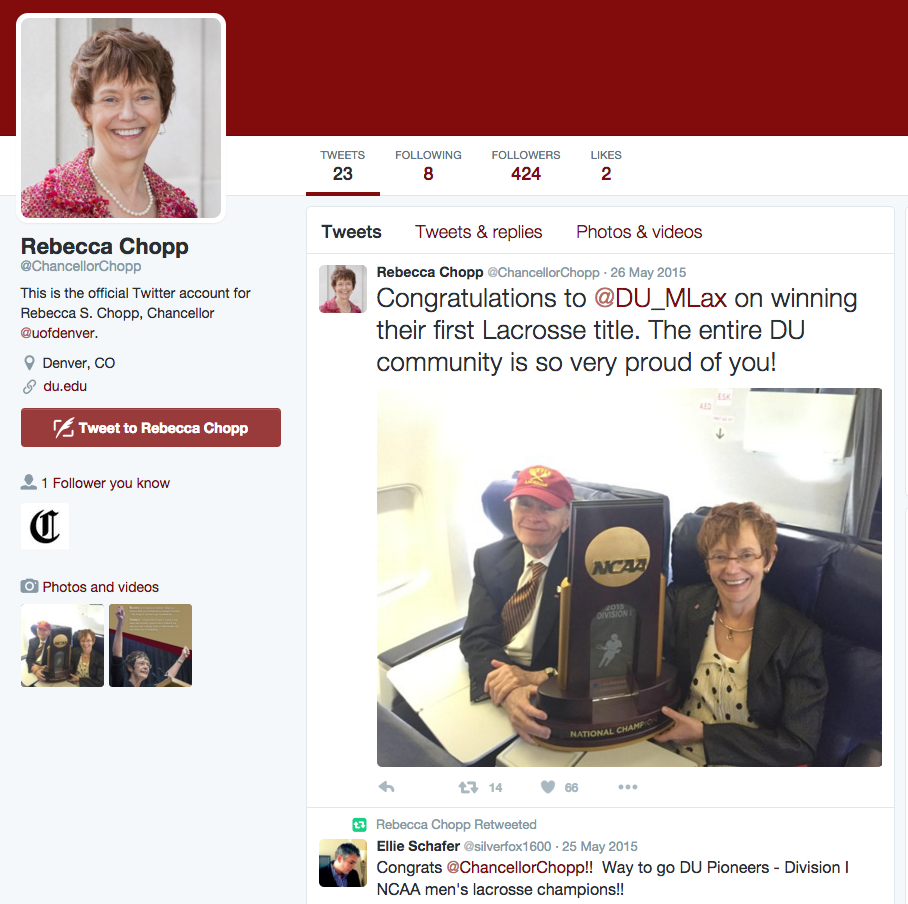There is no doubt that Chancellor Chopp has a presence on campus, actively engaging in everything from DU hockey games and special events to Clarion exclusive interviews. Although face-to-face time with the chancellor occurs on a regular basis, moments to interact with Chopp are fleeting, and in the age of rapid interconnectivity via the internet, one of the most important ways she can reach out to the DU community and beyond is through social media. In order to better connect with the student body, community and prospective students, Chopp must increase her social media presence. Doing so will only help bridge the gap between the administration and the student body.
Currently, the chancellor communicates via a variety of electronic means. Typically, students receive emails from her or they can check updates on the DU website, under the Office of the Chancellor webpage. However, emails are lengthy, websites are not well advertised and both these sources do not truly connect with the student body.
Meanwhile, the chancellor has the ability to post on DU’s or her personal social media, however, she last posted a video one year ago and her last post on her personal Twitter account was when DU lacrosse won the 2015 NCAA Lacrosse Championship. In addition, Chopp does not possess an official Facebook page.
Without an active social media presence, the chancellor is losing a substantial opportunity to connect with the student body in a very efficient, timely and simple way. Instead of lengthy emails that students tend to ignore, Chopp should run a social media campaign, focused on getting students to follow her social media accounts. From there, she and staff in the chancellor’s office should post regular updates about major initiatives, such as Imagine DU, and regular happenings on campus. These updates are critical for students to understand what is going on around campus and how the chancellor is actively implementing change for the future.
In addition, having an active social media presence allows for students to directly engage with the chancellor in real-time, voicing questions, concerns and suggestions about the state of campus and issues important to the student body. Such an interaction is rapid and gives the chancellor a better picture of what is occurring on campus and in the lives of students.
University presidents and chancellors around the nation, such as President Wallace D. Loh from the University of Maryland and President Santa J. Ono from the University of Cincinnati, actively discuss educational issues and initiatives, as well as respond directly to students tweets.
Since her first days at DU, Chancellor Chopp has always sought to connect with the student body and have a presence on campus. However, by not having an active social media presence, she misses out on an opportunity to interact with the DU student body, as well as have the student body engage with the administration to quickly address issues. Therefore, a social media campaign followed by an active social media presence is exactly what the chancellor needs in order to build stronger bonds throughout campus and the community.










